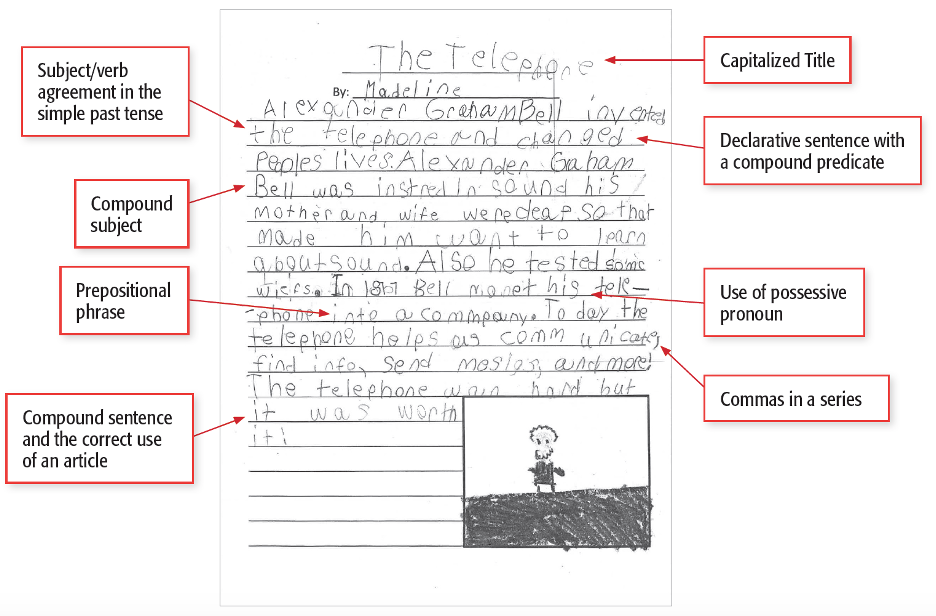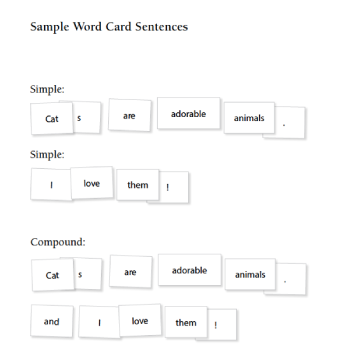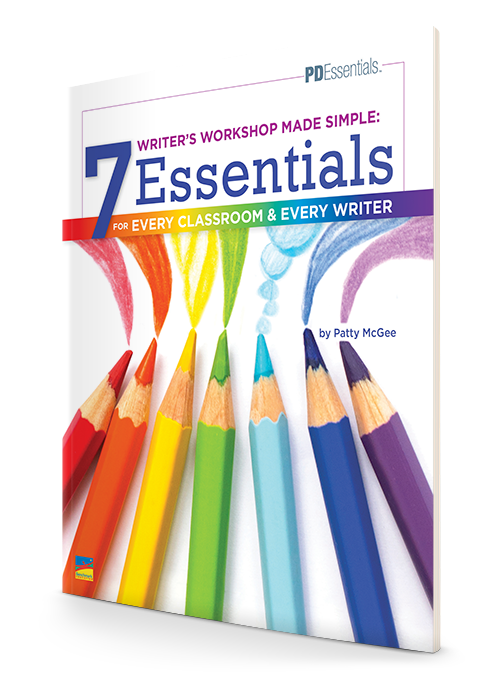- Benchmark Education
- Newmark Learning
- Reycraft Books
- Create an Account
Not Your Granny’s Grammar: 5 Shifts for a Fresh, Impactful Approach to Grammar Instruction

by Patty McGee, M.Ed.
Grammar.
The word alone is either off-putting or inviting (you know who you are, grammarians). Perhaps you are imagining visions of worksheets, sentence diagrams, or a writing piece heaped with corrections in red ink. Or maybe you are someone who secretly corrects grammar in your mind as others speak. Wherever you fall on the love-hate continuum of grammar, we can all probably find common ground in at least one belief:
Writing loses power without the strong, intentional use of grammar.
If we think of writing as a way to share our voice with the world, grammar can help us do so with more command. It is like the sculptor’s chisel or the artist’s paintbrush. With this in mind, let’s embrace a more expansive definition of grammar. I propose we define grammar as a set of tools that writers use to mold, construct, and shape their writing.
In light of this definition, grammar instructional opportunities abound. Some of the old practices that worked for some of us have proven ineffective for many (Hillocks & Smith 2003; Smith, Cheville & Hillocks 2006). To expand into these new opportunities to help student writers use grammar, I suggest 5 small shifts.
Shift #1: Imagine some possibilities.
To begin to shift grammar instruction, it may take a little shedding of grammar experiences that we had as students, or expanding what grammar instruction can be and include. As I began my evolution, I needed to decide what was most important to me. I wanted to offer grammar instruction that was:
-
Connected to writing
-
Joyful, playful, and full of curiosity
-
Responsive
-
Spoken out loud among students
Do any of these speak to you, too? If so, keep them close as you imagine new possibilities in grammar learning. In turn, add to this list to ensure what you value most is present for grammar learners.
Let grammar instruction be driven by your professional values.
Shift #2: Prioritize usage.
The ultimate goal of grammar instruction is for students to use grammar effectively in their writing. Take, for example, this piece from a primary student. I have labeled the way this student used grammar, in rather sophisticated ways in many points.

Without knowing this student, I would bet that she did not know all of this grammar lingo as she was writing this. I am confident that she was probably not saying to herself, “Let me begin this piece using a sentence with correct subject/verb agreement in the simple past tense.” She did, however, do just that! Which is the ultimate goal of grammar instruction: usage. There is some grammar lingo that is important, such as capital letters in a title, which is an accessible skill to both identify and use. It qualifies as important because it serves the larger purpose of using grammar and conventions to convey meaning.
Let the ultimate goal of grammar instruction be usage.
Shift #3: Approach grammar in units.
A grammar unit is one where students have the opportunity to go deep with a particular focus over an extended period of time. I suggest that focus includes more than one related concept or skill; it is actually easier for student writers to build grammar know-how when they are comparing and contrasting different grammar skills. Namely, you may want to have a unit that focuses on three types of sentences: simple, compound, and complex. And you may want to follow that with a unit on nouns and verbs. Perhaps after that, students may experience a unit on all sorts of punctuation.
For each unit, follow the research about how people learn, which includes three phases: surface learning, deep learning, and transfer (Hattie, 2008). In phase one, surface learning, study the grammatical concept in mentor texts. Notice how writers use, for example, different sentence structures. Then study those sentence structures across time. Practice using those sentence structures with partners. And, most importantly, set up time to transfer these new skills into writing. Be sure to revisit these new skills in writing across many text types across the writing curriculum.
Let grammar be taught in units.
Shift #4: Teach grammar explicitly.
When students are taught how to use grammar, they are more likely to approximate and eventually master those concepts. When teaching explicitly, there are a few things to be sure to do. First, make it visible. Note this anchor chart on how to create compound sentences (compound sentences are usually found in the second grade standards).

Actively show each of the steps of creating a compound sentence by designing a compound sentence yourself. Explain clearly the process you are following. Then give students a chance to try out the steps in partnerships.
Let grammar instruction be crystal clear and explicit.
Shift #5: Build in time to play.
Playful grammar? Yes, please! There are so many different ways to get playful with grammar. My personal favorite is based on magna poetry. Magna poetry, something my college roommates and I would use, were tiny magnets with words on them that we would create poems with. Inspired by this, in order to make grammar playful, I created word cards. On those cards I included all different parts of speech, punctuation, and endings, and I even included some blank cards. I laminated the cards, cut them out, and put them into an envelope to play with over and over again. My favorite time to use the cards are after the explicit teaching (shift 4). I ask students to partner up and practice. Students absolutely love this!
Let students play with grammar.
These five simple yet powerful instructional shifts will have a huge impact on how students use grammar as their artistic tool to mold, construct, and shape their writing.
What Next?
Join author Patty McGee for an on-demand PD webinar, Not Your Granny's Grammar: The Power and Joy of Grammar Study. This webinar explores an irresistible approach to grammar study and language standards so that grammar takes its rightful place in Grades 2-8 literacy instruction. Participants will reenvision grammar learning through curious, joyful grammar study. Because when we invite students to let curiosity lead the way, in small snippets of time, writers will develop grammar know-how.
Watch Now →
About the Author
 |
Patty McGee, M.Ed., is an educator, author, and consultant. She has worked near and far—in her own hometown of Harrington Park, across the world in Abu Dhabi, and many places in between. Patty’s passion and vision is to create learning environments where teachers and students discover their true potential and power through joyful inquiry, study, and collaboration. Her favorite moments are when groups of teachers are working with students together in the classroom. It is truly where the magic happens. Her latest book is Writer's Workshop Made Simple: 7 Essentials for Every Classroom & Every Writer. Patty is also a contributing author to Benchmark Writer’s Workshop and the program author of Benchmark Grammar Study Micro-Workshop. |
You May Like: Writer's Workshop Made Simple: 7 Essentials for Every Classroom & Every Writer


















Comments